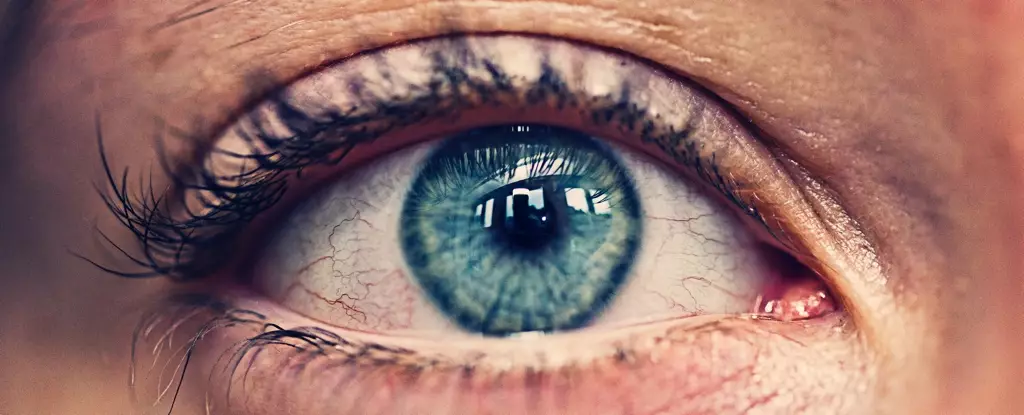In 2017, Alka Kamble, a dedicated farmworker from Jambhali village in Maharashtra, India, faced a grim reality of blurred vision that persisted for five long months. Unable to afford medical care and burdened by long hours of laboring under the unforgiving sun, Kamble epitomizes the plight of countless agricultural workers who sacrifice their health for economic survival. Her struggle thrusts into the spotlight a dire issue often overshadowed in discussions about climate change: its detrimental effects on ocular health. The intersection of poverty, occupation, and environmental change raises critical questions about the health of the most vulnerable communities.
Kamble’s eventual participation in a free eye check-up clinic exposed her to a stark truth: prolonged exposure to solar radiation was likely a key factor contributing to her deteriorating eyesight. The case highlights how climate change exacerbates risks to eye health, perpetuating a cycle of suffering among those already enduring immense hardships. The inability to seek timely medical assistance for basic health issues, including vision problems, amplifies the challenges posed by our increasingly unstable climate.
The Climate Crisis and Its Impact on Eye Health
Research has illuminated the alarming connection between climate change and an uptick in various eye conditions, including cataracts and conjunctivitis. Traditionally, cataracts were understood to be influenced by a variety of factors such as age, genetics, and UV radiation exposure. Recent studies, however, show a significant correlation with the rising global temperatures that accompany climate change. In fact, as temperatures soar, the likelihood of developing cataracts increases significantly, particularly among those who toil outdoors, exposed to harsh environmental conditions day after day.
Dr. Lucía Echevarría-Lucas, an ophthalmologist specializing in eye health, emphasizes the potential havoc wrought by escalating temperatures. When body temperatures exceed 40 degrees Celsius (104 degrees Fahrenheit), the risk of heatstroke emerges, threatening whole-body biological processes—eyes included. The delicate proteins within the eye lens are compromised by reactive oxygen species, leading to cloudiness and vision impairment. As farmers like Kamble operate without adequate protection from the sun’s harmful rays, the likelihood of these conditions manifests more frequently, underscoring an urgent need for protective measures.
Beyond Symptoms: The Broader Consequences of Climate Change
While cataracts garner significant attention, they are not the only eye disorders on the rise due to climate change. Conditions such as keratitis (inflammation of the cornea), pterygium (an abnormal growth on the sclera), and allergic conjunctivitis are becoming increasingly prevalent. In regions where agricultural work predominates, young people are at heightened risk of developing cataracts, indicating that climate change affects not only the aging population but also the youth engaged in labor-intensive farming practices.
An alarming study conducted in northwestern China identified a direct link between rising temperatures and increased instances of conjunctivitis, a common eye ailment. As warming trends extend pollen seasons and enhance mold growth—phenomena tied to climate change—the incidence of allergic conjunctivitis soars. Such findings should prompt not just concern but immediate action. Addressing environmental factors alongside public health initiatives is necessary to alert farmers and outdoor workers of these severe affiliated risks.
Effective Strategies for Protecting Eye Health
Proactive measures can mitigate the risks posed by climate change to eye health. Prioritizing the welfare of outdoor workers, particularly in agricultural settings, is imperative. Implementing sufficient shade, scheduled breaks, and protective clothing—such as wide-brimmed hats and UV-filtering sunglasses—can improve the well-being and ocular protection of those whose livelihoods depend on working under challenging conditions.
Informed dietary choices can also play a crucial role in eye health. Consumption of foods rich in vitamins A, C, and E alongside lifestyle modifications—such as quitting smoking and reducing alcohol consumption—further strengthens the body’s defenses against potential eye damage. In addition, access to advanced contact lenses that offer more anatomical protective features from UV exposure can offer relief for many individuals.
Recognizing the necessity for systemic change, initiatives like India’s National Programme for Control of Blindness and Visual Impairment aim to provide affordable solutions for eye health issues—ultimately addressing the intersection of health inequity and climate change repercussions. Through concerted efforts, we can hope to improve access to necessary surgeries and treatments for those threatened by deteriorating eye health conditions, like Alka Kamble, and countless others enduring similar hardships.
As climate change continues to redefine our environment, we must elevate the conversation around ocular health risks connected to our warming planet, ensuring that access to healthcare and protective measures remain a priority for everyone, especially those at the front lines battling environmental and health challenges every day.

